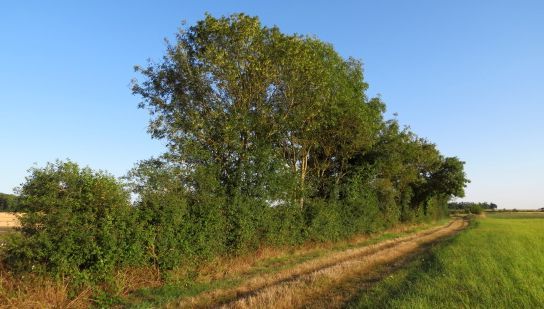Growing and exploiting hedges around field crops.

MOMENT OF INNOVATION..
INNOVATION STATUS.
The definition of a hedge covers a very large diversity of practices, with hedges planted or spontaneous, with low vegetation, shrubby or raised, pruned or not, implanted on flat land or on embankments.
Additional carbon storage in plots surrounded by trees can come mainly from:
- storage in perennial plant biomass (above and below ground),
- the return of organic matter to the soil via the litter (dead leaves), the renewal of the fine roots and the root exudates.
Storage in woody biomass depends on the fate of the wood produced: it will be tens or even hundreds of years for timber, but considered as zero for products used as firewood, burned in the year. This latter use, replacing fossil fuels, helps to reduce CO2 emissions. The cut branches can also be crushed and brought to the soil in order to feed the carbon stock.
Hedgerows at the edge of the plot have a cost, depending on their width (agricultural area "lost") and their maintenance (rental / purchase of specific equipment, and working time). However they bring many benefits, as much to the farmer as to all the actors of his landscape: niche of biodiversity, rampart to the erosion of soils, generator of organic matter ... The hedge is a natural space to be built, individually and collectively.

